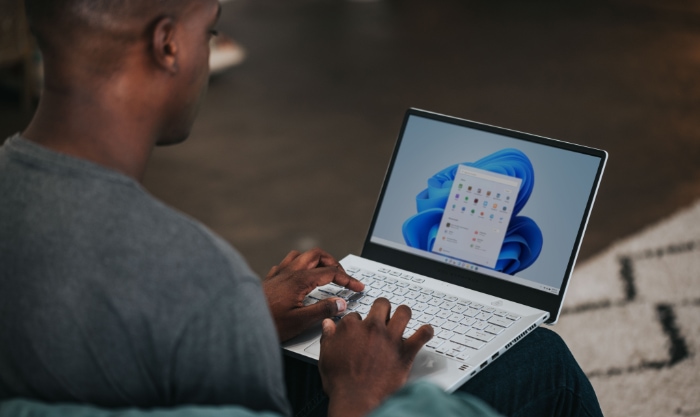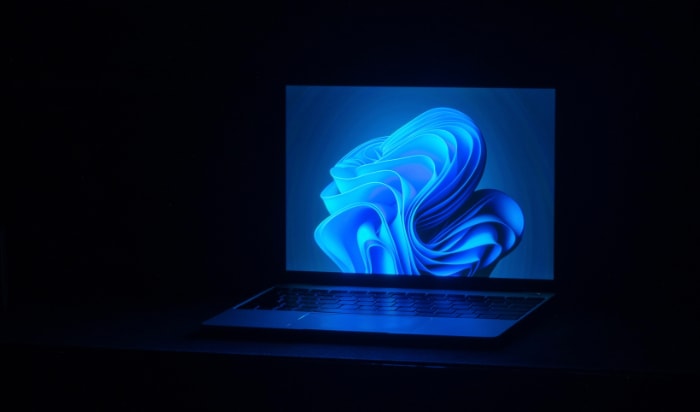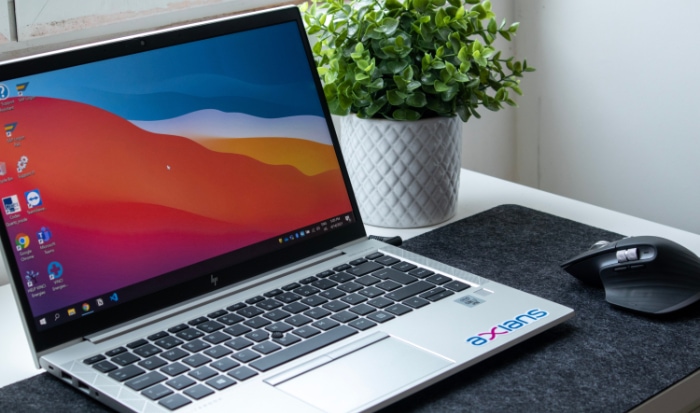How to Fix Windows PC Stuttering: A Step-By-Step Approach

Stuttering or lagging performance on a Windows PC can transform even the most mundane tasks into an exercise in frustration. Whether you’re working from home, gaming, or streaming, a smooth computing experience is essential for productivity and enjoyment.
However, many users face the annoying issue of system stuttering, which can manifest in various forms—from jarring audio to skipped frames in video playback and delayed response times.
Causes of Windows PC Stuttering
Identifying the root cause of stuttering on a Windows PC is the first step toward resolving the issue. A variety of factors can contribute to a choppy computing experience.
Software Conflicts
Software conflicts arise when two or more applications or processes vie for the same system resources or interfere with each other’s operations. For example, running two antivirus programs simultaneously can often lead to system stuttering.
These conflicts can also result from outdated software, or when software installations go wrong and corrupt system files.
Outdated or Incompatible Drivers
Drivers act as intermediaries between the operating system and the hardware components. When drivers are outdated or not compatible with the current version of the operating system, it can result in reduced system performance and stuttering.
Graphics drivers are often the main culprit, but audio and network drivers can also contribute to the problem.
Hardware Limitations
Even the most robust software can’t compensate for hardware that’s simply not up to the task. Older machines or those with insufficient RAM, low CPU power, or outdated graphics cards can struggle to keep up with the demands of modern applications and operating systems.
Over time, as software becomes more resource-intensive, hardware limitations become more apparent, leading to stuttering and lag.
Malware and Background Applications
Unwanted software running in the background can hog valuable system resources. Malware, in particular, can be very resource-intensive and contribute to system stuttering.
Even legitimate background applications, such as updates or cloud storage services, can take up more than their fair share of system resources, leading to a decrease in overall system performance.
Miscellaneous Causes
Sometimes, the reason behind system stuttering doesn’t neatly fit into any of the above categories. For instance, issues with system settings, conflicts with third-party software, or even problems with external devices like printers or USB drives can cause stuttering.
Preliminary Checks
Before diving into more advanced troubleshooting steps, it’s advisable to start with some basic checks. These simple solutions often resolve issues effectively and save you time.
Running Windows Troubleshooter
One of the most straightforward methods for diagnosing issues on a Windows PC is by using the built-in Troubleshooter. This tool is designed to automatically identify and resolve problems in various areas, including hardware and software.
To access it, go to Settings, then Update & Security, and finally select Troubleshoot. Choose the type of problem you’re experiencing, and follow the on-screen instructions.
Checking for Windows Updates
An outdated operating system can be the root cause of many issues, including system stuttering. To rule this out, ensure your Windows is up to date.
To check for updates, go to Settings, then Update & Security, and click on Windows Update. If updates are available, you’ll have the option to download and install them. It’s generally a good practice to keep your system up to date for optimal performance and security.
Monitoring System Performance
Sometimes a quick glance at the Task Manager can provide insights into what might be causing system lag. To open Task Manager, you can press Ctrl + Shift + Esc or right-click on the taskbar and select Task Manager.
Here, you can monitor CPU, memory, and disk usage. If you notice any resource-hogging applications, you may choose to end the task for immediate relief from stuttering.
Examining Disk Space
Lack of disk space can contribute to system stuttering, as Windows requires a certain amount of free space to function properly. To check your disk space, open File Explorer and select This PC.
Right-click on your primary drive (usually C:) and choose Properties. The General tab will show you the used and free space. If your drive is almost full, it might be time to remove some files or applications to free up space.
Reviewing Event Logs
Windows logs various system events, and these logs can offer clues to the root cause of stuttering. To access Event Viewer, type “Event Viewer” into the Start Menu and press Enter.
In the Event Viewer window, look for critical errors under the Windows Logs section. These logs might point you towards software conflicts or hardware issues that could be causing the stuttering.
Resolving Software Conflicts

Software conflicts are a common source of system stuttering and can disrupt an otherwise smooth computing experience. The conflicts may occur for various reasons, such as two applications trying to use the same resource or one application interfering with another.
The key to resolving these conflicts lies in identification and proper management.
How to Identify Conflicting Software
The first step in resolving software conflicts is identifying which software or processes are at odds. Task Manager and Event Viewer are two useful tools for this purpose.
To open Task Manager, press Ctrl + Shift + Esc and examine the Processes tab for abnormal CPU or memory usage. Alternatively, use Event Viewer to look for error messages or warnings that indicate software conflicts.
To open it, type “Event Viewer” into the Start Menu and hit Enter, then check under the Windows Logs section.
Disabling Startup Programs
One of the frequent culprits behind software conflicts is an overcrowded startup list. Too many programs launching at startup can consume system resources and create conflicts.
To disable unnecessary startup programs, open Task Manager and go to the Startup tab. From there, you can right-click on any program you deem non-essential and select ‘Disable’.
Uninstalling Unnecessary Software
If you have software that you no longer use or that seems to be causing conflicts, it’s best to uninstall it. Go to Settings and then Apps.
Browse the list of installed software, select the program you want to uninstall, and click on the Uninstall button. Always remember to back up any important data related to the software before proceeding with the uninstallation.
Performing a Clean Boot
A clean boot can help you isolate the software causing conflicts. To perform a clean boot, type ‘msconfig’ into the Start Menu and hit Enter.
In the System Configuration window, go to the Services tab and check the box that says ‘Hide all Microsoft services’. Then click ‘Disable all’. Next, go to the Startup tab and click ‘Open Task Manager’. Disable all startup items, then restart your computer. This will boot your system with only the essential drivers and services, making it easier to identify the conflicting software.
System Restore as a Last Resort
If all else fails, a System Restore can revert your computer to a state where it was functioning well. This is generally seen as a last resort because it can result in loss of software and data changes made after the restore point.
To perform a System Restore, type “Create a restore point” into the Start Menu and press Enter. In the System Properties window, click the System Restore button and follow the on-screen instructions.
Updating and Rolling Back Drivers
Drivers act as a critical interface between your computer’s hardware and its operating system. Keeping them updated ensures optimal performance, while rolling back to a previous version can sometimes resolve compatibility issues that contribute to stuttering.
How to Update Drivers
Up-to-date drivers are essential for the smooth operation of your system. Outdated drivers can result in performance lags, including stuttering. To update your drivers, follow these steps:
- Right-click on the Start Menu button and choose Device Manager.
- Expand the category for the type of driver you want to update, such as Display adapters for graphics drivers.
- Right-click on the device and choose Update driver.
- Follow the on-screen prompts to search automatically for updated driver software.
Windows will search for the latest driver and install it automatically. If Windows does not find a new driver, you may also visit the device manufacturer’s website to download the latest drivers manually.
Manual Driver Installation
Sometimes, automatic updates do not catch the latest drivers, especially if they are beta releases or if they come from third-party sources. In these cases, manual installation is necessary:
- Download the driver file from the manufacturer’s website.
- Go to Device Manager and right-click on the device whose driver you want to update.
- Choose Update driver and then select Browse my computer for drivers.
- Navigate to the location where you saved the downloaded driver file and follow the on-screen instructions to complete the installation.
Rolling Back Drivers
If a newly updated driver is causing issues, rolling back to a previous version could be a solution. Here’s how to do it:
- Open Device Manager and locate the problematic device.
- Right-click on the device and choose Properties.
- Navigate to the Driver tab and click the Roll Back Driver button.
- Follow the on-screen instructions to complete the process.
Driver Backup Before Making Changes
Before you update or roll back any drivers, it’s advisable to create a backup of your current drivers. This gives you the option to revert changes if something goes wrong.
Software utilities are available that can help you back up drivers with just a few clicks. Alternatively, you can also use Windows’ built-in features to backup drivers manually.
Using Manufacturer Software
Some hardware manufacturers offer their software solutions for driver management. These applications not only keep your drivers up to date but also offer options like driver backup and restore.
If your system’s hardware comes with such software, it’s usually a good idea to utilize it for efficient driver management.
Hardware Adjustments

At times, system stuttering may be rooted in hardware limitations or malfunctions rather than software issues. In such cases, adjusting or upgrading hardware components could be the solution you’re seeking.
Adjusting Graphics Card Settings
Your graphics card’s settings can be a major determinant of system performance. In the control panel of your graphics card (NVIDIA Control Panel for NVIDIA cards, AMD Radeon Settings for AMD cards), you’ll find various options to adjust the performance and quality of your graphics.
Lowering certain settings like texture quality or screen resolution can often reduce system stuttering. Just make sure to apply changes incrementally and test performance after each adjustment.
Upgrading RAM
One of the most effective ways to improve system performance is to increase your computer’s RAM. If your system has less than 8GB of RAM and you experience frequent stuttering, consider upgrading.
Most laptops and desktops allow you to add additional RAM sticks, which is an affordable and efficient way to boost performance.
Checking for Overheating
An overheated system can result in numerous issues, including stuttering. Regularly check your computer’s temperature using software utilities designed for this purpose.
If your system is running hot, you might need to clean the cooling fans or even replace them. In extreme cases, applying new thermal paste to the CPU can also make a significant difference.
Updating BIOS
A BIOS (Basic Input/Output System) update can sometimes improve hardware compatibility and system performance. However, this is generally considered an advanced procedure and should be done with caution.
Always consult your motherboard’s manual or manufacturer’s website for specific instructions and follow them meticulously to avoid potential issues.
Replacing Faulty Hardware
If you’ve tried all other solutions and still experience stuttering, it might be time to consider hardware replacement. Faulty or failing hardware components like hard drives, graphics cards, or even motherboards can cause persistent issues.
Before proceeding, consult the diagnostics tools available within Windows or from your hardware manufacturer to pinpoint the problematic component. Once identified, you can proceed to replace it.
Conclusion
Addressing the issue of system stuttering on a Windows PC involves a comprehensive approach that spans both software and hardware considerations. Starting with an analysis of potential causes, you can execute preliminary checks and adjustments to rule out common issues.
Software conflicts are prevalent culprits that can often be resolved by managing startup programs, uninstalling unnecessary software, or even performing a clean boot. On the hardware side, upgrading RAM, adjusting graphics settings, and keeping an eye on system temperature are just some of the proactive steps you can take.
Drivers, the essential intermediaries between your hardware and operating system, also play a crucial role in system performance; hence, keeping them updated or rolling back to previous versions can be instrumental. By combining these strategies, you enhance your chances of identifying and rectifying the root cause of any stuttering, thereby improving your computer’s performance and your overall experience.



